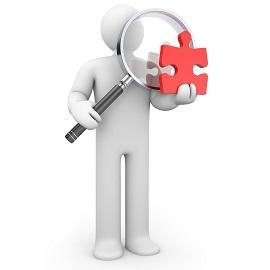- Date: March 25, 2016
- Posted by Litcom Team
- Category: Digital Strategy, IT Assessment

 An IT roadmap is a actionable plan that matches short-term and long-term business objectives with specific technology solutions and resources to help meet those objectives. The roadmap has three significant functions:
An IT roadmap is a actionable plan that matches short-term and long-term business objectives with specific technology solutions and resources to help meet those objectives. The roadmap has three significant functions:
- It achieves a consensus about a set of needs and the technologies required to fulfill those needs;
- It creates a method to help forecast future technology requirements; and
- It provides a framework to plan and coordinate ongoing technology solutions and decisions.
Building an IT Roadmap: The IT and Business Relationship
IT strategy is closely intertwined with business priorities, so that the process to build and communicate an IT roadmap is often triggered by:
- New digital business opportunities or different strategic goals set by management;
- Continuous requirements to support business priorities and transformation efforts; and
- The need to keep IT and business roadmaps consistent with each other.
To align with business goals, IT departments must establish objectives, plans, and indicators to evaluate IT options against expected business performance, and communicate their IT roadmaps to all stakeholders.
The Roadmap process
The first step in developing the roadmap is to review and fully comprehend the organization’s business strategy and get a perspective on how IT is presently supporting (or not fully supporting) the business. Once the organization establishes that current state (the starting point) for both the business and IT (and how they interrelate), the second step involves assembling a vision (future state) for IT. Finally, the third step involves deciding how the organization can get from the current state to the vision state via very specific activities (the roadmap). A key ingredient will be the expectations and requirements from business management on how they anticipate IT to contribute to the overall business functions.
1) Understanding the current state involves collecting and reviewing:
- An inventory of the services IT presently delivers to the business;
- A list of the technology assets utilized to provide/operate/support those services;
- The human resources used to provide/operate/support those services;
- A reconciliation of the costs associated with all the assets and services needed to deliver these IT services to the business;
- A current view of the IT project portfolio (new/upgraded services already planned and services to be retired);
- The current business strategy and objectives;
- An identification of the emerging technologies/services that both the business and IT believe will benefit the current business strategy;
- A list of the opportunities to improve/consolidate/retire services;
- The high impact business processes or cycles; and
- An organization model (current operating model).
2) Defining the desired vision (future state) involves:
- Fully understanding the future business strategy ;
- Identifying the systems and services required by IT needs to effectively support this future business strategy;
- An evaluation of the current and emerging technology assets that will be necessary to deliver those services;
- The skills and competencies required of the IT team required to deliver those services.
3) Developing an IT Roadmap from current state to future (or desired) state involves:
- Ensuring proper alignement to the business strategy;
- Establishing a high-level IT project portfolio to accomplish the transition of IT systems and services (people, process, technology); and
- Providing financial assets required for the transition.
Many organizations develop a three to five year roadmap. The roadmap should be developed with input from all areas of the business because of the diverse nature of the needs necessary to meet their organization’s objective.
The Litcom Approach
Developing a roadmap assists organizations with identifying the projects that enable the business to achieve their strategic goals, and provides a mechanism for IT to forecast the technology needs that map to the business goals and objectives. To find out how Litcom can help your organization develop an IT Roadmap for future success, please contact us at: [email protected]
News Categories
- Business Analysis
- Data Visualization
- Digital Strategy
- Enterprise Security
- ERP Optimization
- Information Security Health Check
- Information Security Program Development
- IT Assessment
- IT Management
- IT Staff Augmentation
- IT Strategy
- Merger & Acquisition Due Diligence
- PCI Compliance
- Post Merger Integration
- Procurement Process Improvement
- Project Management
- Threat Risk Assessment & Penetration Testing
- Vendor Selection
Archives
- May 2016
- April 2016
- March 2016
- February 2016
- January 2016
- December 2015
- November 2015
- October 2015
- September 2015
- August 2015
- July 2015
- June 2015
- May 2015
- April 2015
- March 2015
- February 2015
- January 2015
- December 2014
- November 2014
- October 2014
- August 2014
- July 2014
- June 2014
- May 2014
- March 2014
- February 2014
- October 2013
- June 2013
- May 2013
- April 2013
- March 2013
- February 2013
- January 2013
- December 2012
- November 2012
- October 2012
- September 2012
- August 2012
- July 2012
- June 2012
- April 2012
- March 2012
- June 2011
- May 2011
Stay Connected
265 Rimrock Rd., Suite 202
Toronto, Ontario M3J 3C6
phone: 905 763 8900
fax: 905 763 8233
email: [email protected]
Recent Posts
- Digital Strategy
- Data Visualization – Why every organization needs a DV plan and how to get started
- Hiring Project Managers and Business Analysts – Why finding good ones is so challenging and how to acquire the right fit for your organization
